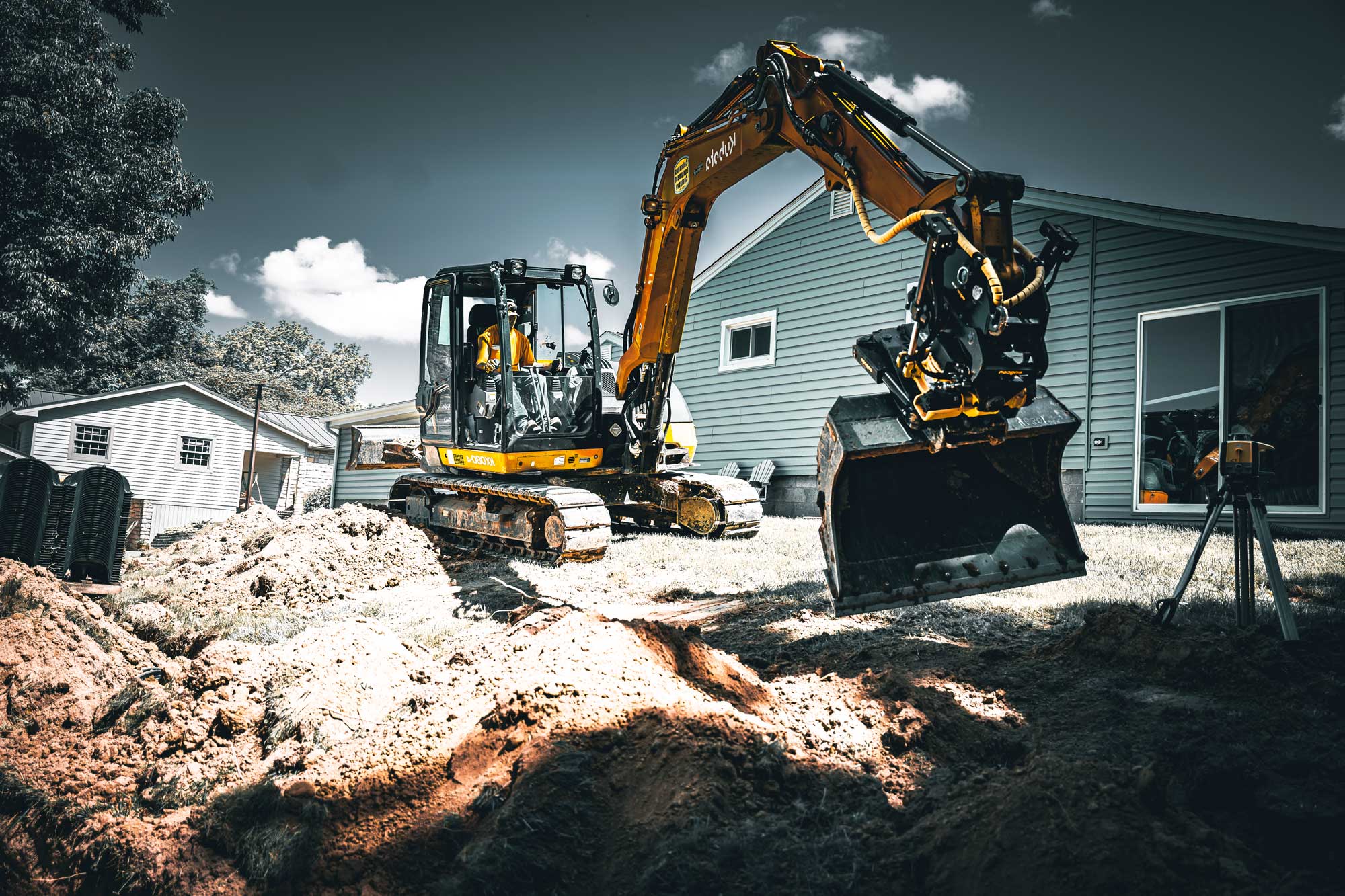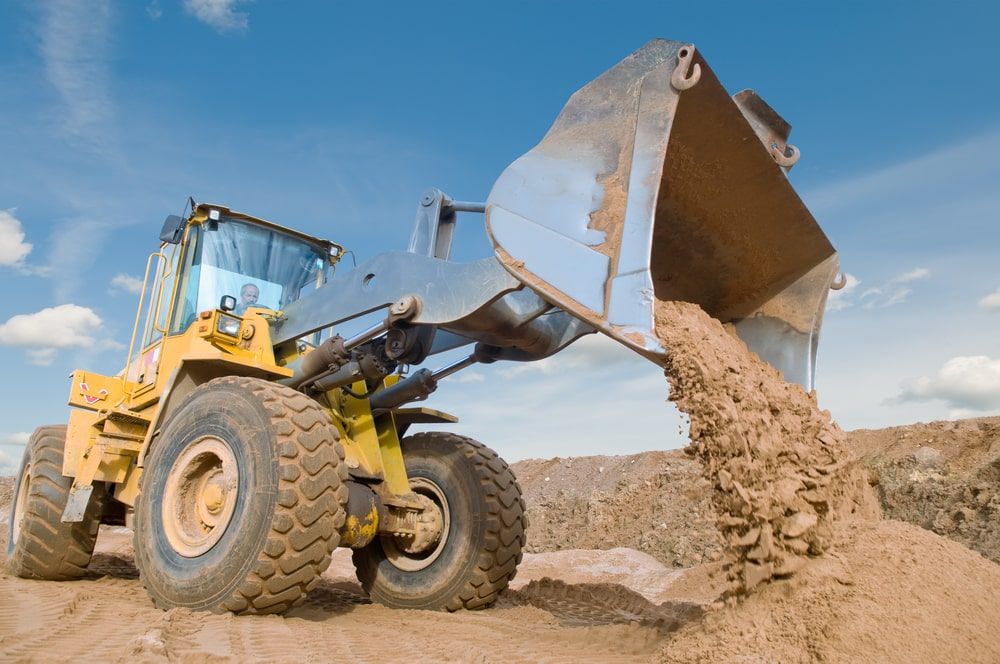Affordable Lancaster Excavation - Quality Excavation at Competitive Prices
Affordable Lancaster Excavation - Quality Excavation at Competitive Prices
Blog Article
Unveiling the Art of Excavation: Pro Tips for Safe and Efficient Digging
In the world of excavation, the mastery of productive and risk-free digging is an art kind that needs accuracy, adherence, and understanding to established techniques. As soil is turned and planet is moved, the details of excavation disclose themselves, demanding an eager understanding of tools, dirt composition, safety methods, and ecological considerations. The proficiency required to browse these elements properly can indicate the difference in between a successful excavation project and a possible catastrophe. By unraveling the layers of this complex procedure, a world of approaches and insights waits for those looking for to boost their excavation skills to brand-new heights.
Importance of Proper Tools
To guarantee the security and effectiveness of any kind of excavation job, utilizing the ideal tools is extremely important. Excavation tasks vary in range and complexity, ranging from little property landscaping work to large building and construction tasks.
Excavators are fundamental pieces of machinery in any digging operation. These functional machines come in various sizes to match various task demands. Mini excavators are ideal for smaller jobs, while bigger excavators take on much more considerable projects successfully. Backhoes are one more essential tools type, integrating the functions of a loader and an excavator in one device. They are important for jobs calling for adaptability and maneuverability.
Bulldozers succeed in jobs that call for pushing big amounts of dirt or debris. By spending in the appropriate equipment, excavation projects can be finished securely, on time, and with precision.
Comprehending Dirt Composition
A detailed grasp of dirt make-up is fundamental for executing excavation jobs with accuracy and safety and security. Recognizing the different types of dirt is essential as it directly affects excavation approaches, tools selection, and overall job effectiveness. Soil make-up typically includes four main components: sand, silt, clay, and organic issue. Each component has unique residential or commercial properties that affect just how dirt reacts to excavation procedures.
Silt particles are smaller than sand yet larger than clay, offering modest drainage and communication. Organic matter, such as decaying plant product, affects dirt fertility and stability.
Prior to starting excavation, conducting dirt tests to determine its composition and attributes is necessary. This information assists in choosing the appropriate devices, applying precaution, and creating excavation techniques tailored to the particular soil conditions - excavating ohio. By comprehending dirt make-up, excavation professionals can enhance task end results while guaranteeing security and adherence to ideal methods
Security Steps and Methods
Understanding soil structure is the cornerstone whereupon precaution and procedures for excavation jobs are developed, guaranteeing the wellness of workers and the success of the undertaking. There are several essential procedures that have to official statement be implemented to alleviate threats and stop mishaps. when it comes to safety and security throughout excavation.
Primarily, prior to any type of digging starts, a complete evaluation of the website must be performed to identify any prospective dangers such as below ground energies, unstable dirt problems, or neighboring structures that can position a threat. It is crucial to have a proficient person manage the excavation procedure to ensure that all safety protocols are followed strictly.
Additionally, all workers involved in the excavation has to be appropriately educated in risk-free digging techniques and the correct operation of tools. By adhering to these safety and security procedures and methods, excavation jobs can be completed effectively and without incident.
Efficient Excavation Planning
When embarking on an excavation job, meticulous preparation is necessary to ensure performance, safety, and effective outcomes. Effective excavation planning involves a number of vital steps that are vital for the smooth implementation of the task.
Once the website assessment is total, the following step is to create a clear timeline and schedule for the excavation tasks. This consists of determining the sequence of jobs, equipment demands, and manpower allowance. Correct scheduling assists avoid delays and guarantees that the task remains on track.

Additionally, communication amongst all staff member is extremely important throughout the planning stage. Clear regulations, routine updates, and reliable sychronisation are essential for a successful excavation project. By investing effort and time in meticulous planning, excavation teams can significantly enhance performance, reduce threats, and attain successful end results.

Taking Care Of Environmental Factors To Consider
With enhancing emphasis on ecological sustainability in building practices, managing environmental considerations has actually become a vital aspect of excavation projects. Excavation helpful resources activities have the prospective to influence the surrounding atmosphere through dirt disintegration, sediment overflow, habitat disturbance, and contamination of water sources. To reduce these risks, it is crucial to execute ideal methods that focus on ecological security.

Additionally, proper waste monitoring is essential to stop dirt and water contamination. Applying procedures for the disposal of unsafe materials, recycling of waste materials, and minimizing making use of dangerous chemicals can dramatically lower the environmental impact of excavation projects. By incorporating these techniques into excavation planning and implementation, building and construction firms can make sure that their jobs are not only safe and effective however likewise environmentally liable.
Verdict
In verdict, grasping the art of excavation needs a comprehensive understanding of correct devices, soil structure, safety measures, and reliable planning. By adhering to these standards and considering ecological aspects, excavations can be carried out safely and successfully. It is critical to prioritize safety and performance in every excavating task to guarantee effective results.
As soil is transformed and earth is relocated, the ins and outs of excavation reveal themselves, requiring a keen understanding of devices, dirt composition, security protocols, and environmental factors to consider.To make certain the safety and performance of any kind visite site of excavation job, making use of the proper equipment is vital.A detailed understanding of dirt make-up is basic for performing excavation tasks with accuracy and security. Understanding the different types of dirt is vital as it straight impacts excavation approaches, tools option, and overall job performance. By understanding dirt structure, excavation specialists can boost project outcomes while guaranteeing safety and security and adherence to ideal methods.
Report this page